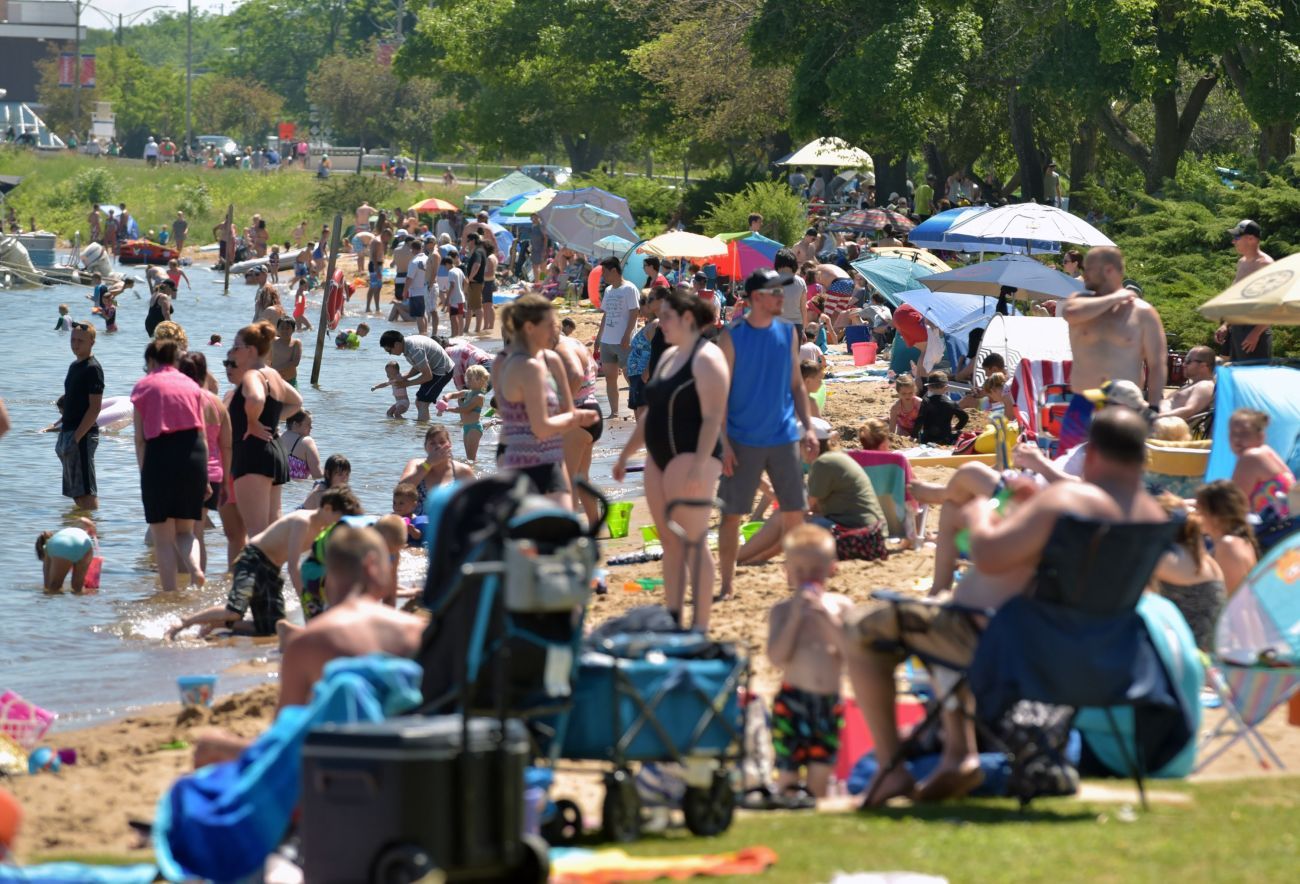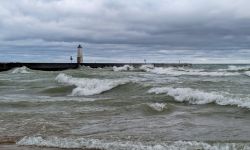Memorial Day waters will be cold, but not as cold as decades past

- Welcome to Memorial Day and water temperatures on the Great Lakes that may make you regret ever wading in
- Expect temps only in the 40s or perhaps 50s this weekend
- Most people feel comfortable swimming in waters at least 70 degrees Fahrenheit
This Memorial Day weekend, those running into the Great Lakes are likely to run right back out.
Water temperatures in Michigan lakes, especially the Great Lakes, are still uncomfortably cold. According to the National Centers for Environmental Information (NCEI), northern Lake Michigan had an average temperature of 46 degrees fahrenheit earlier in the week, while southern Lake Michigan saw an average of just 50 degrees.
It was a similar story in Lake St. Clair, but the lowest temperatures were found in Lake Superior, which had temperatures broaching 40 degrees.
Related:
- Bad season for Michigan mosquitoes may mean good Memorial Day for humans
- Anishinaabe tribes work to save Michigan whitefish
- Meet the Michigan Magnet Man, finder of lost river trash
NCEI said most people feel comfortable swimming when waters are at least 70 degrees Fahrenheit. Temps below that can cause hypothermia when a person is exposed for prolonged periods of time. While the average swim might not be long enough to cause hypothermia, it is best to exit the water if you begin to feel unwell.
Ron Olson, chief of parks and recreation at the Michigan Department of Natural Resources (DNR), said DNR takes a number of measures to ensure the safety of guests at state beaches.
“We typically, at most parks, put the swim buoys out in our designated swim areas that mark five feet deep,” Olson said. “But usually, we don’t put them out at some of our beaches, like Grand Haven or Holland, until the water temperature is reasonable. So people might not see the markers out for Memorial Day weekend.”
The water may not warm sufficiently for several weeks. Last year, according to data collected by the National Oceanic and Atmospheric Administration (NOAA), the water in Lake Michigan didn’t start reaching comfortable levels until mid July. In Lake Huron, it took until August, and in Lake Superior, temperatures didn’t reach comfortable levels at all.
While waters this weekend might be chilly, they could be warmer than the Memorial Day weekend water temperatures of the past. Great Lakes surface water temperatures have been generally increasing, according to the U.S. Climate Resilience Toolkit.
Lake Huron saw an increase of 5.2 degrees fahrenheit from 1968-2002. Lake Superior saw an increase of 4.5 degrees over the same time period. The rise in water temps is twice the rate of recent increases in average air temperatures, and isn’t stopping. Lake surface temperatures are projected to raise an additional 7 degrees fahrenheit by 2050, and 12.1 degrees fahrenheit by 2100.
While rising water temperatures might mean that the waters are staying warmer for longer, Olson said that doesn’t necessarily help swimmers at the start of the season.
“People will continue to go on the water later in the year, and sometimes the water temperatures will linger longer, but usually on the front end we haven’t seen the water warm up that fast,” Olson said.
But warming waters are not good news for the ecosystems inside the Great Lakes. The federal government’s Climate Resilience Toolkit notes that warmer temperatures lead to increases in blue-green algae, as well as toxic algae. Both forms of algae can harm not only the aesthetic of the Great Lakes, but greatly decrease water quality.
Increased algae production can harm fish and wildlife habitats in the Great Lakes, as well as worsen the already negative impact of invasive species.
See what new members are saying about why they donated to Bridge Michigan:
- “In order for this information to be accurate and unbiased it must be underwritten by its readers, not by special interests.” - Larry S.
- “Not many other media sources report on the topics Bridge does.” - Susan B.
- “Your journalism is outstanding and rare these days.” - Mark S.
If you want to ensure the future of nonpartisan, nonprofit Michigan journalism, please become a member today. You, too, will be asked why you donated and maybe we'll feature your quote next time!




